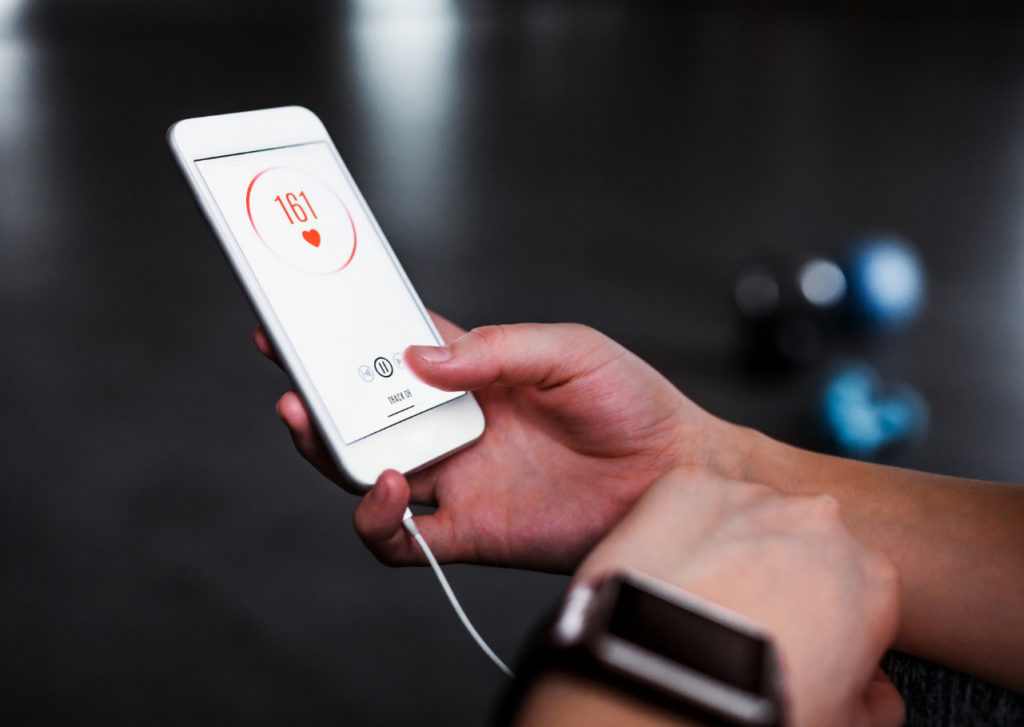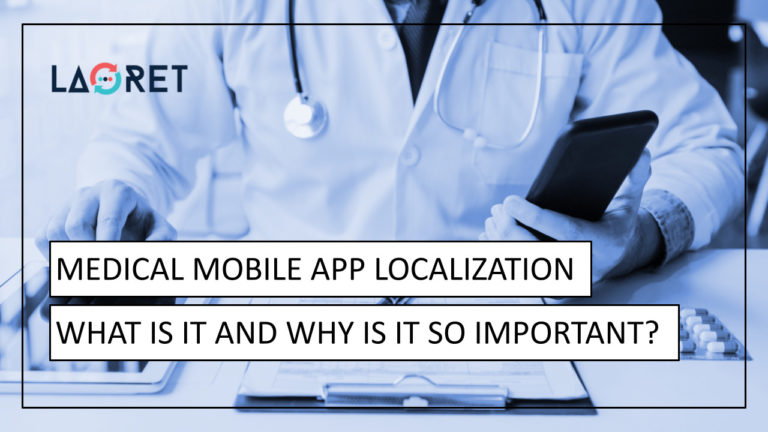Medical Mobile App Localization: What Is It And Why Is It So Important?
Mobile apps are changing the way healthcare professionals and patients interact with each other. The market is awash with apps developed to assist the medical industry in its duties in treatment and assistance.
But, especially in this recent year of medical turmoil, there’s a demand for multilingual options for those who need treatment and guidance but speak different languages. Learn more about medical mobile apps, and why they should be part of an effective localization strategy.
Types Of Medical Mobile Apps
First things first! What kind of medical apps are there? The medical industry is going digital, and apps are being developed to fulfill multilingual medical assistance on every level. The actual range of medical apps can go from useful tools used by medical staff in the case of an instant need of patient care, to apps that test for vital signs or even support general care at home. Here are some of the key types of medical apps currently flooding the market.
- Apps that help patients book appointments and resolve issues. Capzule PHR and Doctors Appointment Reminder are prime examples of this.
- Apps that assist the patient in gaining correct information about the dosage of their medicines and symptoms. In this category, apps such as ScriptSave WellRx help with locating medications and alerts for dosage reminders.
- Apps that measure vital signs such as blood pressure and heart rate. Instant Heart Rate, for example, is the most popular heart rate app out there.
- Medical Interpreting apps. These apps significantly help increase the number of people visiting hospitals and boost overall health since the language barrier is slowly but surely dissolving.
Of course, we will touch upon how medical app translation should follow very strict and specific rules, and the same is true for the original app to begin with. Medical apps carry a great deal of responsibility. This means that only certain types of apps will be recognized as medical apps going from a set of rules and regulations.
The Needs For Strict Regulations In Mobile Apps
In the United States, for example, the Food and Drug Administration (FDA) has guidance for mobile medical applications.1
This guidance document refers to medical apps and devices as being for the diagnosis of disease or other conditions, or the cure, mitigation, treatment, or prevention of disease, or is intended to affect the structure or any function of the body of man. They specify boundaries as well as regulations that these apps must answer to before they can qualify as genuine, medical apps.
For Europe, CE Marking is used as the standard requires a company must adhere to.2
CE Marking demands the translation of all relevant content, which is required for 28 European Union (EU) members as well as the countries belonging to the European Free Trade Association (EFTA). In addition, CE Marking is mandatory for countries that want to sell their mobile app within the European Economic Area (EEA). The regulations specify medical apps and other documents to be translated into the official language of each country. Products carrying the CE Marking ensure both companies and consumers that all countries within the EEA will receive a product that meets all legal requirements, and has the same level of quality for all.
It is important to remember that these regulations are always subject to change. The EU’s recent regulations for medical apps stipulate that there should be a clear distinction between medical apps and well-being apps, since only medical apps will fall under the regulatory guidelines 3 A weight loss app analyzing a person’s progress and delivering targeted workout routines, for example, falls under the umbrella of well-being apps. If the app were to offer specific dietary advice for diabetics, for example, it would make it a medical app and regulatory rules will apply. Long story short, it matters greatly to be up to date. Especially since legal requirements for medical apps have also increased under the EU’s Medical Device Regulation.4

Why Localize Your Medical Mobile App?
aims to adapt a medical mobile app, or any app for that matter, to new languages and new markets. In other words, an app should go through linguistic, cultural, and technical changes, while maintaining the app’s original intent, so that new users feel like the app is originally designed for their market.
Mobile app localization carries a lot of benefits. Here are some of them:
- Instant accessibility of multilingual care, expertise and interpreting services. Medical mobile apps can be an effective equalizer and ensure that every person, no matter which language they speak, can receive healthcare advice and accurate diagnoses.
- Beyond the specific needs defined by the userabilty, the previously mentioned regulation standards will be met and critical legal issues can be avoided.
- Increased ROI provided by optimized discoverability for international users. This is best achieved through international keyword localization strategies that can increase downloads by as much as 767%5
Speaking of legal issues, the lack of accurate medical translation services has proven disastrous and expensive for hospitals and medical professionals in the past. Willie Ramirez, a native Cuban, had successfully sued a South Florida hospital for 71 million USD, all because inaccurate Spanish translations had caused an otherwise simple diagnosis to spiral out of control.6
The Building Blocks Of A Quality Multilingual Medical App
Even though apps can answer this immediate need for multilingual medical assistance, not all apps and not all translations will do. Research conducted in Language Translation Apps in Health Care Settings has evaluated the medical apps developed to fill the still rather large gap between professional interpreting services, and the patients needing translations.7
The data shows that not just any app will do when it comes to medical assistance. And none of them could replace professional translators and interpreters. In fact, if any app should be developed for a multilingual application, only skilled professionals should be used to achieve it.
More specifically, a reliable multilingual app will need to be translated accurately through targeted human translation. As Ramirez’s case has proven, medical translations have to be accurate because lives, as well as careers, are on the line. Therefore, any translator in charge of translating the app content should be a native, in-country linguist with specific expertise and knowledge in the medical fields. Medical terminology is not only very specific but can also differ according to specific regions within a country.
Here are 5 key considerations for effective medical mobile app localization:
- A high level of quality control is secured through Translation, Editing, and Proofreading (TEP), so that linguistic standard can be met and cultural differences can be respected.
- Not only the in-app content, but the non-string content such as default currency, time, and date should be adapted to the targeted location. The store content, the first content your user encounters, will also need to receive an extra level of attention to boost your app’s discoverability and downloads.
- Translations are provided in the strictest security and safety. Any sensitive documents or info should be handled in full confidence through end-to-end encryption. Note that in this case as well, any project should be launched using a tightly constructed confidentiality and non-disclosure agreement for everyone involved.
- Continuous Translation of updated features and content. Mobile app localization doesn’t end just with the localization of your app content. It is a continuous process. App developers always add more features and make changes and therefore these updates would need to be localized as well. In order to make this run smoothly, all of the target languages need to be synced with the source language, so that miscommunications and errors can be avoided.
- Rigorous Testing (both smoke and beta tests) and QA before publishing and releasing your game.
Pro Tip! Do you want to learn more about mobile app localization and are you keen to know what the exact localization process looks like? Check out our blog on why mobile app localization is a smart business expansion strategy.
Conclusion
While medical mobile apps have to follow strict regulations in order to be a valuable tool to be used in the medical industry, the same can be said for the localization process. Only skilled professionals should be set the task of localizing the app who have linguistic as well as medical experience.
At Laoret, we have worked hard to create a system that streamlines the mobile app localization process from ordering to final delivery so that quality control is seamlessly combined with cost-effectiveness and efficiency. We leverage native, in-country professionals with years of experience in the medical field and safeguard sensitive information with the use of end-to-end encryption and non-disclosure agreements.
References
- Policy for Device Software Functions and Mobile Medical Applications
- CE Marking
- Medical apps under the new European MDR
- Deadline 2020: What LSPs Need to Know About the EU’s New Medical Device Regulation
- iphone App Keyword Localization
- Language, Culture, And Medical Tragedy: The Case Of Willie Ramirez
- Language Translation Apps in Health Care Settings: Expert Opinion






